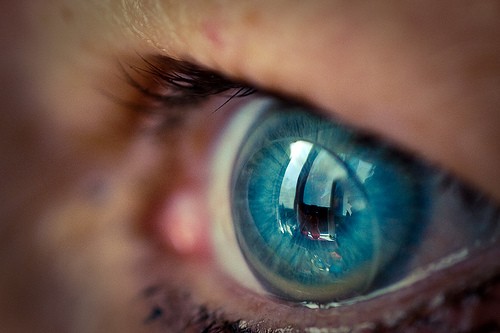
A 23-year-old woman in Taiwan had her eyes gnawed out by a bug, which infected her eye because she wore her contact lenses constantly for six months without taking them off.
The bug was single-celled that caught on to an infection caused in the eye, when the girl wore disposable contact lenses, continuously for six month at a stretch, without ever taking them off.
"The girl should have thrown the contact lenses away after a month but instead she overused them and has now permanently damaged her corneas," Daily Mail quoted Wu Jian-Liang, Director of Ophthalmology at the Wan Fang Hospital, in Taipei.
Doctors always recommend patients not to wear contact lenses for more than a stretch of eight hours a day. Other than this, there are also some other general guidelines to follow, while wearing contact lenses. One must clean the contact lenses regularly, and it must be taken off before going to bed.
Contact lenses must never be worn during cooking, especially near barbeques, and one should always take off contact lens while swimming.
While the lenses help the vision of the eye, it cuts out the cornea's oxygen supply, due to which infections may form in the cornea. The cornea could also get infected if the contact lens is not cleaned regularly.
Incidents have been reported when people wearing contact lenses while cooking have been permanently blinded, as the heat of the charcoal melted the contact lenses into the eye. Swimming pools could carry some germs or microscopic bugs in them, which could get trapped between the contact lens and the eye.
Lian Kao, the Taiwanese girl, whose eyeballs were eaten out by the microscopic bug, had indeed not removed her contact lenses before going into the swimming pools.
When the doctors finally removed Kao's contact lens, they were horrified to find an amoeba in her eye. This type of amoeba is called acanthamoeba. This acanthamoeba had found the space between the contact lens and her eye to be very hospitable. This created a breeding ground for the microscopic bug.
The acanthamoeba is generally found in water or soil, and can cause rare infections to a human's skin, nervous system and eye. However, although most people do come in contact with this microscopic creature some time or the other during their lifetime, they are unlikely to be adversely affected by it. The human immune system is strong enough to fight the acanthamoeba in most cases. However, if there is a wound (especially in the eye), the acanthamoeba could be too strong for the immune system to fight it.

















